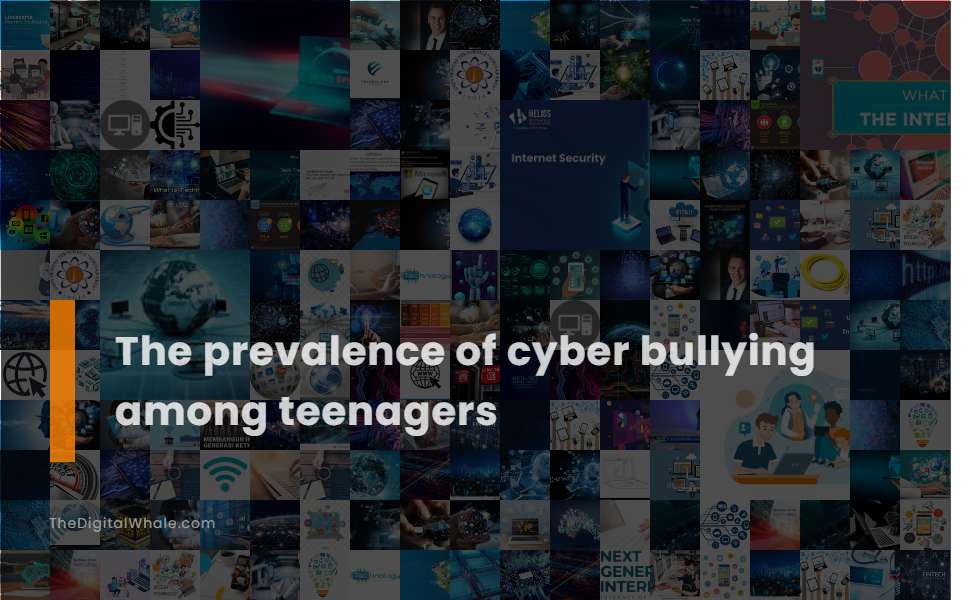The Prevalence of Cyber Bullying Among Teenagers
What percentage of students report experiencing cyberbullying? What are the consequences of cyberbullying among teens? Let's find out more about The Prevalence of Cyber Bullying Among Teenagers.

26.5% of American teenagers (aged 13 to 17) were victims of cyberbullying in 2023, an increase from 23.2% in 2021.
In 2023, 26.5% of American teenagers aged 13 to 17 reported being victims of cyberbullying, marking an increase from 23.2% in 2021. This rise highlights the growing impact of cyberbullying on teens' mental health, school attendance, and overall well-being. For more detailed insights and statistics on this critical issue, visit the Teenage Cyberbullying Statistics page. Understanding these challenges is crucial in fostering supportive environments that prioritize the safety and mental health of young individuals.
77.5% of cyberbullying victims experienced mean or hurtful comments posted online, the most common form of cyberbullying.
The most common form of cyberbullying experienced by teenagers is mean or hurtful comments posted online, with a significant percentage of cyberbullying victims reporting this type of harassment. This form of cyberbullying is more prevalent than other types, such as spreading rumors or receiving unwanted explicit images. For more detailed information on this subject, you can explore the insights provided by Exploding Topics, which delves into the various statistics and trends regarding cyberbullying. Understanding these dynamics is crucial for developing effective preventive strategies and support systems for affected individuals.
19.2% of American teenagers reported missing days from school due to cyberbullying, nearly doubling from 10.3% in 2016.
In 2023, 19.2% of American teenagers reported missing days from school due to cyberbullying, a figure that nearly doubled from 10.3% in 2016, highlighting the increasing impact of Cyberbullying on school attendance and overall well-being.
54% of U.S. teens reported that bullying (both in-person and electronic) was a significant issue in their schools in 2023, up from 43% in 2016.
In 2023, 54% of U.S. teens reported that bullying, both in-person and electronic, was a significant issue in their schools, marking an increase from 43% in 2016. This statistic underscores the growing concern and impact of bullying on school environments. For more detailed insights and statistics, visit Bright Path Behavioral Health's website, where you can explore the nuances and trends surrounding teenage bullying in today's digital age.
59.2% of female teens and 49.5% of male teens in the U.S. experienced cyberbullying at some point in their lives.
In the U.S., 59.2% of female teens and 49.5% of male teens aged 13 to 17 have experienced cyberbullying at some point in their lives, highlighting a significant gender disparity and the pervasive nature of cyberbullying among teenagers. To understand these dynamics better, explore the Teenage Cyberbullying Statistics on the BrightPath Behavioral Health website for more detailed insights and preventive measures.
Related:
What are the benefits of blockchain technology for supply chain management? What are the latest artificial intelligence news? Let's find out more about Recent Developments In Information Technology.
28.6% of female teenagers and 24.2% of male teenagers reported being cyberbullied in the last 30 days.
In the last 30 days, 28.6% of female teenagers and 24.2% of male teenagers in the U.S. reported being cyberbullied, highlighting the significant and ongoing issue of Cyberbullying among teenagers.
54% of teenage girls aged 15 to 17 reported experiencing cyberbullying, compared to 44% of boys in the same age group.
According to the Pew Research Center, 54% of teenage girls aged 15 to 17 have experienced at least one cyberbullying behavior, compared to 44% of boys in the same age group, highlighting a significant gender disparity in cyberbullying experiences among this demographic.
21% of Black teens reported being bullied due to their race, significantly higher than White or Hispanic teens.
The prevalence of cyberbullying among teenagers varies significantly across different racial groups. In particular, 21% of Black teens reported experiencing bullying because of their race, a rate that is considerably higher compared to White teens at 4% and Hispanic teens at 11%. This disparity underscores the disproportionate impact of racial cyberbullying faced by Black teenagers. For more detailed insights and statistics on this issue, you can explore the website on Teenage Cyberbullying Statistics.
Nearly 30% of LGBTQ+ students experienced cyberbullying, compared to 13% of their heterosexual peers.
Nearly 30% of LGBTQ+ students experienced cyberbullying in the past year, which is more than twice the rate of their heterosexual peers, who reported a 13% incidence of cyberbullying. This disparity highlights the disproportionate impact of cyberbullying on LGBTQ+ youth. To learn more about these alarming statistics, you can visit the Teenage Cyberbullying Statistics page on BrightPath Behavioral Health's website, which provides an in-depth analysis of this pressing issue.
Cyberbullying victims were 3 times more likely to attempt suicide, with Black middle-school-aged victims being 135% more prone to suicidal ideation and planning.
Cyberbullying victims, particularly among teenagers, are at a significantly increased risk of suicidal behaviors, with LGBTQ students who were cyberbullied being three times more likely to attempt suicide. Black middle-school-aged victims of cyberbullying were found to be substantially more likely to engage in suicidal thoughts and create a plan, and faced a heightened risk of attempting suicide compared to their peers. For more detailed statistics and information, visit the Bright Path Behavioral Health website.
Related:
What are the pros and cons about online school/classes? What are the pros and cons of using the Internet for teenagers? Let's find out more about The Pros and Cons of Online Education for Teenagers.
